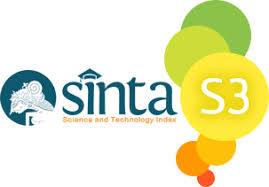Revisiting pro-3r attitude mediating effect of green packaging on consumer purchase intention
 Abstract views: 637
,
Abstract views: 637
,
 PDF downloads: 685
PDF downloads: 685
Abstract
The company has currently started to develop eco-friendly innovation products. This is driven by one of the emerging environmental issues in Indonesia, specifically plastic waste. Theory Planned Behavior was used as a theoretical framework in this research and has been widely used in several previous researches to measure the attitude in influencing consumer purchase intention and the concept of MPR. This research was intended to evaluate the effect of green packaging on purchase intention in Aqua LIFE’s products mediated by pro-3R attitudes. The object of this research was the green packaging of Aqua Life products which is referred to as Danone Aqua’s Marketing Public Relations program innovation. This research was conducted in the metropolitan area of DKI Jakarta. The sample in this research was determined by utilizing the non-probability sampling method by means of a purposive sampling technique. Data were collected using an online questionnaire with a Likert scale (with a point scale: (1) strongly disagree to (5) strongly agree). The number of respondents in this research was amounted to 347 respondents. The data in this research were then analyzed using path analysis by means of structural equation modeling (SEM). The results showed that: (1) Green packaging had a significant effect on the pro-3R attitude of Aqua LIFE’s consumers; (2) Green packaging had a significant effect on the purchase intention of Aqua LIFE’s products; (3) The pro-3R attitude did not successfully mediate the effect of green packaging on purchase intention of Aqua LIFE’s products in DKI Jakarta City. Consequently, further research is highly recommended to raise the pro-3R attitude variable as a moderator variable, not as a mediator variable.
Keywords: Marketing Public Relations, Green Packaging, Theory Planned Behavior, Purchase Intention, and Pro-3R Attitude
Introduction
References
Copyright (c) 2022 Jurnal Komunikasi Profesional

This work is licensed under a Creative Commons Attribution-ShareAlike 4.0 International License.

Jurnal Komunikasi Profesional is licensed under a Creative Commons Attribution-ShareAlike 4.0 International License.
1. Proposed Policy for Journals That Offer Open Access
Authors who publish with this journal agree to the following terms:
- Authors retain copyright and grant the journal right of first publication with the work simultaneously licensed under a Creative Commons Attribution License that allows others to share the work with an acknowledgment of the work's authorship and initial publication in this journal.
- Authors are able to enter into separate, additional contractual arrangements for the non-exclusive distribution of the journal's published version of the work (e.g., post it to an institutional repository or publish it in a book), with an acknowledgement of its initial publication in this journal.
- Authors are permitted and encouraged to post their work online (e.g., in institutional repositories or on their website) prior to and during the submission process, as it can lead to productive exchanges, as well as earlier and greater citation of published work (See The Effect of Open Access).
2. Proposed Policy for Journals That Offer Delayed Open Access
Authors who publish with this journal agree to the following terms:
- Authors retain copyright and grant the journal right of first publication, with the work [SPECIFY PERIOD OF TIME] after publication simultaneously licensed under a Creative Commons Attribution License that allows others to share the work with an acknowledgement of the work's authorship and initial publication in this journal.
- Authors are able to enter into separate, additional contractual arrangements for the non-exclusive distribution of the journal's published version of the work (e.g., post it to an institutional repository or publish it in a book), with an acknowledgement of its initial publication in this journal.
- Authors are permitted and encouraged to post their work online (e.g., in institutional repositories or on their website) prior to and during the submission process, as it can lead to productive exchanges, as well as earlier and greater citation of published work (See The Effect of Open Access).



